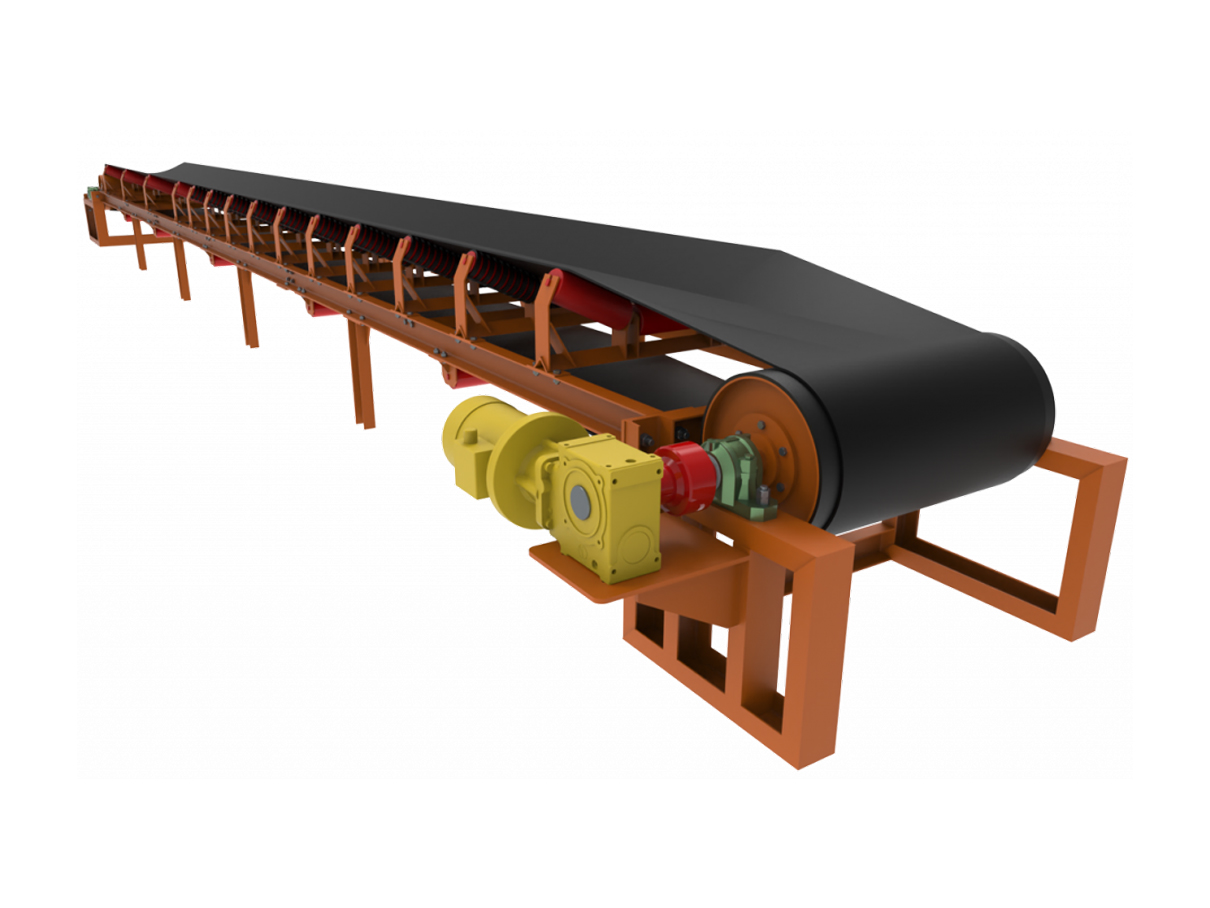
A belt conveyor is a widely used mechanical handling device for the transportation of materials or goods from one location to another. It consists of a continuous belt made of various materials, typically rubber, plastic, or fabric, which is stretched over a series of pulleys and supported by a frame. Belt conveyors are versatile and can be used in a wide range of industries and applications due to their simplicity, efficiency, and reliability.
Key components and features of a belt conveyor system include:
Conveyor Belt : The conveyor belt is the central component of the system. It can vary in width, material, and construction depending on the type of materials being transported. The belt is designed to be durable and capable of carrying the specified load.
Pulleys : Belt conveyors have two or more pulleys, which are essentially rotating drums or rollers. One of the pulleys is typically powered, either directly by an electric motor or indirectly via a transmission system, to move the belt. The other pulleys are idlers that help support and guide the belt.
Frame or Structure : The conveyor belt is supported by a frame or structure, which can be made of steel, aluminum, or other materials. The frame provides the necessary support and stability for the conveyor.
Drive Unit : The drive unit includes an electric motor, gearbox, and couplings that provide the power to move the conveyor belt. It is typically located at one end of the conveyor.
Idlers : Idler rollers support the belt on its return path and help maintain proper belt tension.
Take-Up Mechanism : A take-up mechanism is used to maintain the appropriate tension in the conveyor belt, ensuring that it remains properly tensioned as the belt wears and stretches over time.
Loading and Discharge Points : These are areas where materials are loaded onto the conveyor and discharged from it. Loading chutes, hoppers, or other equipment are often used at these points.
Belting Support : Various support components, such as slider beds, impact beds, and return rollers, help guide and support the conveyor belt, especially when carrying heavy or irregularly shaped loads.
Belt conveyors can be designed in a variety of configurations to suit specific applications, such as flat or troughed belts, inclined or declined conveyors, and curved conveyors for navigating corners.
Applications of belt conveyors include:
Material Handling : Belt conveyors are commonly used in warehouses, distribution centers, and manufacturing facilities to move materials, boxes, or products from one location to another.
Mining and Quarrying :In mining and quarry operations, belt conveyors transport ore, coal, stone, and other materials.
Agriculture : Belt conveyors are used in agriculture for tasks like loading and unloading grains, crops, and livestock feed.
Food Processing : In the food industry, belt conveyors are employed to move food products along the production and packaging lines.
Airport Baggage Handling : At airports, belt conveyors are used to transport luggage from check-in counters to the baggage claim area.
Recycling : Belt conveyors are used in recycling facilities to sort and transport recyclable materials.
Automotive Industry : In automobile manufacturing, belt conveyors are used for assembling vehicles and moving parts along the production line.
Belt conveyors are a fundamental component of modern industrial processes and play a crucial role in optimizing material handling and logistics in various industries. They are valued for their efficiency, cost-effectiveness, and ability to move a wide range of materials over short and long distances.

